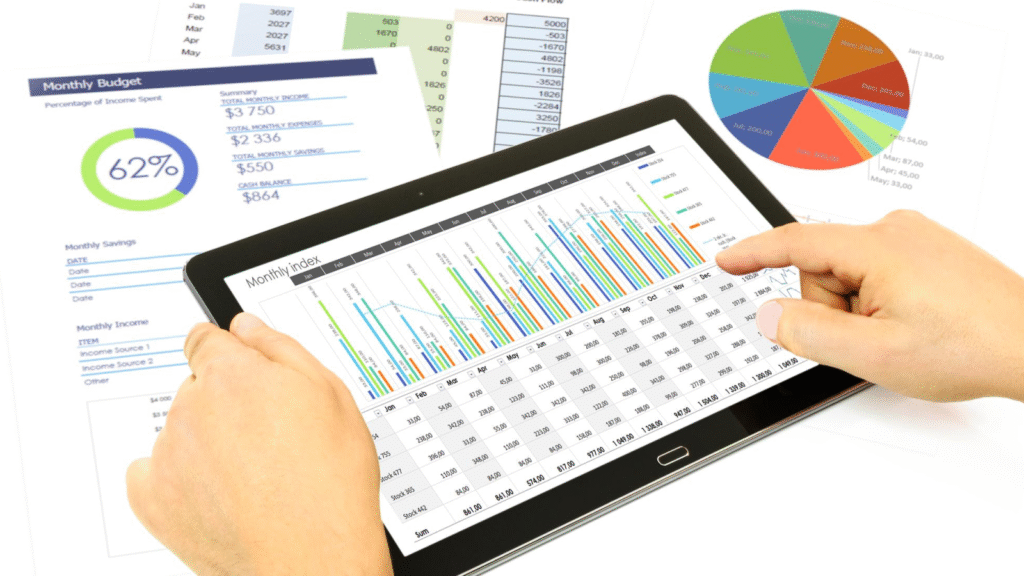You will play many roles as a small business owner, but one of the most crucial is that of financial decision-maker. Your long-term success depends on knowing how your money flows through your company, hence, a well-designed Chart of Accounts (COA) is highly essential.
A COA is more than a set of labels and numbers. It’s framework to organize transactions that have to do with revenue, expenses, assets, liabilities and equity. Whether your small business is just starting out or you are honing your financial arrangement, this is what you should take into account while creating your COA.
Understand the Purpose of a Chart of Accounts
Prior to examining the process of establishing one, it is beneficial to comprehend the purposes of the COA. A chart of accounts is your accounting system’s blueprint. It arranges financial information into groups that simplify access to:
- Track where your money originates and travels.
- Generate correct financial statements.
- Support budgetary decisions and policy-making.
- Streamline filing and tax preparation.
- Boost financial transparency and compliance.
A solid COA establishes the foundation for clear, consistent records, whether you’re handling bookkeeping for small businesses alone or with the assistance of an expert.
Customize the COA to Fit Your Business Needs
There is no one-size-fits-all COA; what benefits a retail store or a consulting company might not apply to a tech startup. Consider your particular revenue sources and spending categories instead of a generic or default template.
For instance:
- It is recommended that retail employees maintain separate accounts for “Sales Revenue,” “Cost of Goods Sold (COGS),” “Inventory,” and perhaps even “Returns and Discounts.”
- For a service-based company, you might add “Consulting Fees,” “Retainer,” “Software Subscriptions,” and “Contractor Payments.”
Ask yourself: To make intelligent choices, what must I track? How will it enable me to grasp profitability in every sphere of the company?
If in doubt, consider looking for accounting services for small businesses that provide COA setup specific to your sector.
Find the Right Level of Detail
While some small business owners throw everything into general categories like “Expenses” or “Revenue,” others attempt to keep tabs on every penny through excessively detailed records. Neither extreme is beneficial.
Finding a balance should be your aim. Too much detail causes confusion and congestion. Too little and you lose insightful analysis of your business.
A decent framework might resemble this:
- Primary category: Marketing expenses
- Sub-account: Google Ads
- Sub-account: Print Advertising
- Sub-account: Social Media Campaigns
Without complicating your bookkeeping, this degree of information enables you to monitor where you’re receiving the highest return on investment.
Try to review your COA at least once every three months. To keep things organized and meaningful, combine overlapping accounts and archive unused ones.
Choose Clear, Consistent Account Names
Naming is more important than you may expect. Vague or inconsistent names, such as “Miscellaneous” or merging unrelated expenses, cause uncertainty, errors, and lost time.
Choose instead:
- Specific terms (“Office Supplies” vs “Admin Expenses”)
- Consistent (keep to a naming style all through)
- Descriptive (allows one to quickly grasp what the account tracks).
Whether you handle your bookkeeping yourself or through a bookkeeping service for small business owners, this will simplify life.
Apply Correct Account Classifications
The fundamental format of your financial statements should be reflected in your COA:
- Assets include items like bank accounts, machinery, and accounts receivable.
- Liabilities such as unpaid payroll taxes, credit card debt, and loans
- Equity, as in owner contributions and retained earnings
- Revenue, such as sales of goods or payments for services
- Spending includes rent, software subscriptions, and advertising
Treating a loan as income or a capital acquisition as an expense, or using the incorrect classification, may distort your financial records, influence small business tax filing, and cause compliance problems.
Although most contemporary accounting software assists you in avoiding these errors, it’s still a good idea to review the fundamentals or see an accountant.
Reconcile Regularly to Keep Things Accurate
Only accurate data inside a COA will make it effective. Reconciling your accounts on a regular basis, comparing your bookkeeping records with your bank statements, credit card activity, and payroll data, is one approach to keep it that way.
Depending on transaction volume, reconciling monthly (or even weekly) benefits:
- Point out missing transactions.
- Recognize inaccuracies in data entry.
- Determine any potential fraud or unapproved charges.
- Verify accurate cash flow tracking.
You may choose bookkeeping services for a small business to handle it for you if you’re short on time.
Use the COA as a Tool for Decision-Making
An effective COA is always considered a valuable business tool. When set up properly, it can assist you:
- Create a precise budget
- Be prepared for seasonal costs.
- Calculate the marketing return on investment.
- Track grant or loan application utilization.
- Support investor or lender requests.
Your COA helps you to make faster, better business decisions by meaningfully arranging your financial data.
Adapt and Evolve Your COA Over Time
In a year, neither your company nor your COA will look the same. Review your chart as you expand, pivot, or add new services to make sure it still shows your financial reality.
Best practices consist of:
- Reviewing COAs either quarterly or biannually
- Requesting your accountant to offer improvements
- Implementing categories or account names as necessary
- Archiving or closing outdated accounts helps to prevent clutter.
Consider your COA to be an ongoing document rather than something you “set and forget.”
Lean on Expert Help
Even the best tools cannot fully replace the value of professional direction. Although automation and accounting software can streamline many tasks, they sometimes overlook the specifics of your company’s structure, industry-specific reporting needs, or evolving tax rules. Expert advice becomes, consequently, rather crucial. For companies, using bookkeeping or accounting services for small businesses gives access to professionals who can help you create a strategic, more than just compliant COA. Your business will grow, and they can ensure your accounts are accurate, help you interpret financial data, and offer ongoing support.
(Conclusion)
Designing the Chart of Accounts with intention, tailoring it to your operations, and routinely reviewing it can help you to better understand your finances and increase your control over your growth. Whether you handle your finances on your own or with the help of experts, a strong COA guarantees that your figures tell the truth and that you’re always prepared to move forward.







